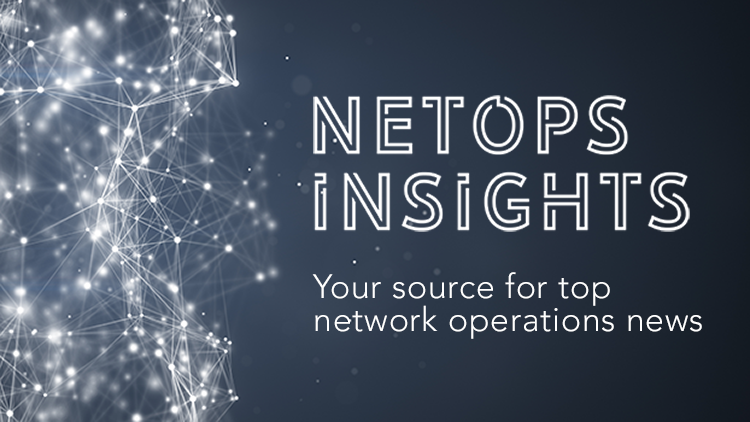Networking Predictions for 2020, The New Era of Networking & Enterprise Automation

Week of December 15th, 2019
The Top Five Predictions For Networking Technology Trends In 2020
What does networking hold for us in 2020? What are the top networking technology trends to track in the new year? Here are five predictions that could shape the networking market for the next 12 months.
SD-WAN vs. Load Balancing: How Are They Different?
SD-WAN can use load balancing for WAN connections, but it doesn’t require load balancing to work. Compare some of the similarities and differences between the two.
Cisco Predicts ‘New Era Of Networking’
Cisco Systems believes the IT industry is on the threshold of a new era of networking that will see modern technologies powering new ways of building and operating networks and solving associated business challenges. Those technologies that need to be wrangled in new ways to achieve these goals include machine learning, machine reasoning, and automation, which can simplify operations and help humans make decisions.
Enterprise Automation And Orchestration: What’s The Holdup?
Communications Service Providers (CSPs) are losing billions in potential revenue as the adoption of cost-cutting automation and orchestration technologies continues to stall. A recent study involving 150 CSPs found that the telecom industry has let up to USD 30 billion slide as a result of poor automation and orchestration. The latest TM Forum report, Enterprise Orchestration Service: Building the Bridge, reviews the role of open APIs and catalogs in orchestration and explores how CSPs are working to overcome the obstacles they’re facing in orchestrating enterprise services. Here, we outline the key insights from the report.
The Top Six Cloud Computing Trends Of 2019
Cloud computing was one of the hottest topics in the technology and business media throughout 2019. This is no surprise as the cloud sector has been growing rapidly for the last few years. Synergy Research Group recently reported a 37 percent overall growth year-over-year in public cloud. They also note that it has taken just two years for the public IaaS and PaaS markets to double in size and their forecast shows them doubling again within the next three years. While steady growth was expected this year, a few trends of note stand out. When the experts look back at 2019, they will likely stress the following cloud computing trends shaped the year.
Virtualization Will Transform The Wireless Industry
Although 5G features such as gigabit-per-second throughput and the ability to compete with wireline broadband generate the most attention, the cloudification of 5G networks will have the greatest impact on the wireless industry. As the network becomes a distribution of data centers based on technologies such as software-defined networking (SDN) and network-function virtualization (NFV), operators and customers will reap huge rewards. Operators will have increasingly scalable, adaptable, intelligent, and secure networks while customers will see a broader range of innovative applications arriving sooner and operating on more powerful networks.
SD-WAN To Clip WAN Edge Growth, Gartner Predicts
The way networks are architected is changing and this change is driving innovation in the WAN edge market, according to the latest Gartner Magic Quadrant WAN Edge Infrastructure report. In addition to ranking the leading WAN vendors, the report delved into an analysis of market trends offering predictions as to how the changing winds of network demands will shape the market going forward. One of the research firms’ biggest predictions might come as a surprise: the WAN edge market’s annual growth rate will fall in end-user spending from 2018 to 2023, as enterprises shift to lower-cost, single appliance SD-WAN deployments.
The Ultra-Everything 5G Network Is Here: Do We Have The Tools To Succeed?
While network operators have made tremendous strides in advancing connectivity primarily focused on smartphones, the next challenge – and the first new revenue opportunity in a decade – is to support the tsunami of new device types and service demands entering the marketplace. In a speech at the Total Telecom Congress in October, Ivo Rook, SVP of Sprint’s IoT business, highlighted to telecom companies and network providers that it’s now imperative to design and deploy infrastructure driven by IoT.
Customers Demonstrate The Benefits Of Secure SD-WAN Across Industries
Given today’s expanding networks, largely being driven by cloud transformation and similar digital transformation efforts, keeping everything connected in a single, easily manageable environment is a critical challenge. Increasingly, the solution to many of these challenges is to replace legacy WAN hardware with a software-defined wide-area network (SD-WAN) architecture. However, while SD-WAN addresses performance challenges and connectivity issues, especially for applications running across a public network, most SD-WAN solutions fail to address one of the most critical implications for distributed networks, and that’s security.
Gaining A Competitive Edge Through DevOps Automation Practices
A growing number of organizations are exploring the benefits of DevOps. This new technology provides a wide range of benefits that they can take advantage of. As a result, the DevOps market is expected to reach $13 billion within the next six years. What are the real benefits of DevOps technology? The list is numerous, but the biggest advantage is automation.
SD WAN vs. MPLS: Understanding The Difference
Some network vendors have been positioning SD WAN vs. MPLS as the ultimate solution to any network issue. They’re selling SD WAN, or software-defined wide area network, as a revolutionary box that allows you to throw away your traditional MPLS network, with a claim that you will dramatically reduce your operating expenses. There’s a kernel of truth in there: SD WAN does let you use less expensive connections for some business applications. But in most circumstances, you’re not going to jettison all of your MPLS connections once you switch to SD WAN.
An Overview Of Cloud Migration And Open Source
Most businesses are moving toward making their business processes more user-friendly, through digitization. This shift of business modernization comes with a heavy price for them in terms of money and in terms of time. It is going to take time and a great amount of investment in new innovative technologies. Cloud computing is the biggest trend in digital transformation due to its ability to make business applications and infrastructure easily accessible. In the roadmap toward cloud migration, businesses are looking to save capital investment or expenses (CAPEX) and operational expenses (OPEX).
